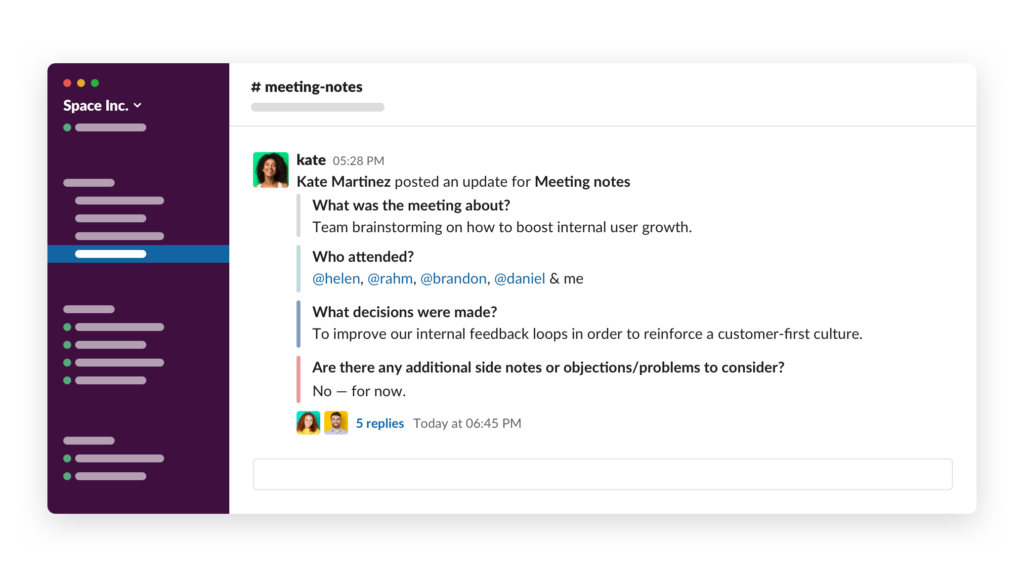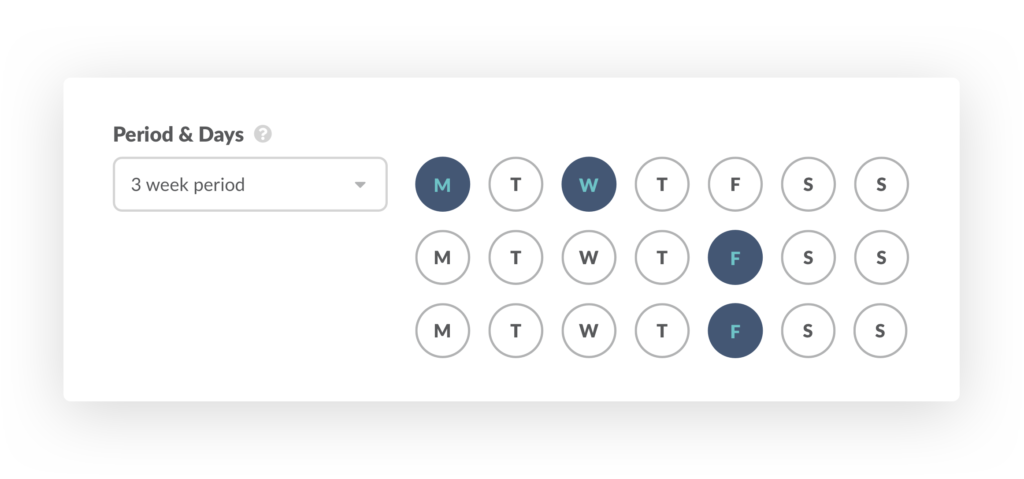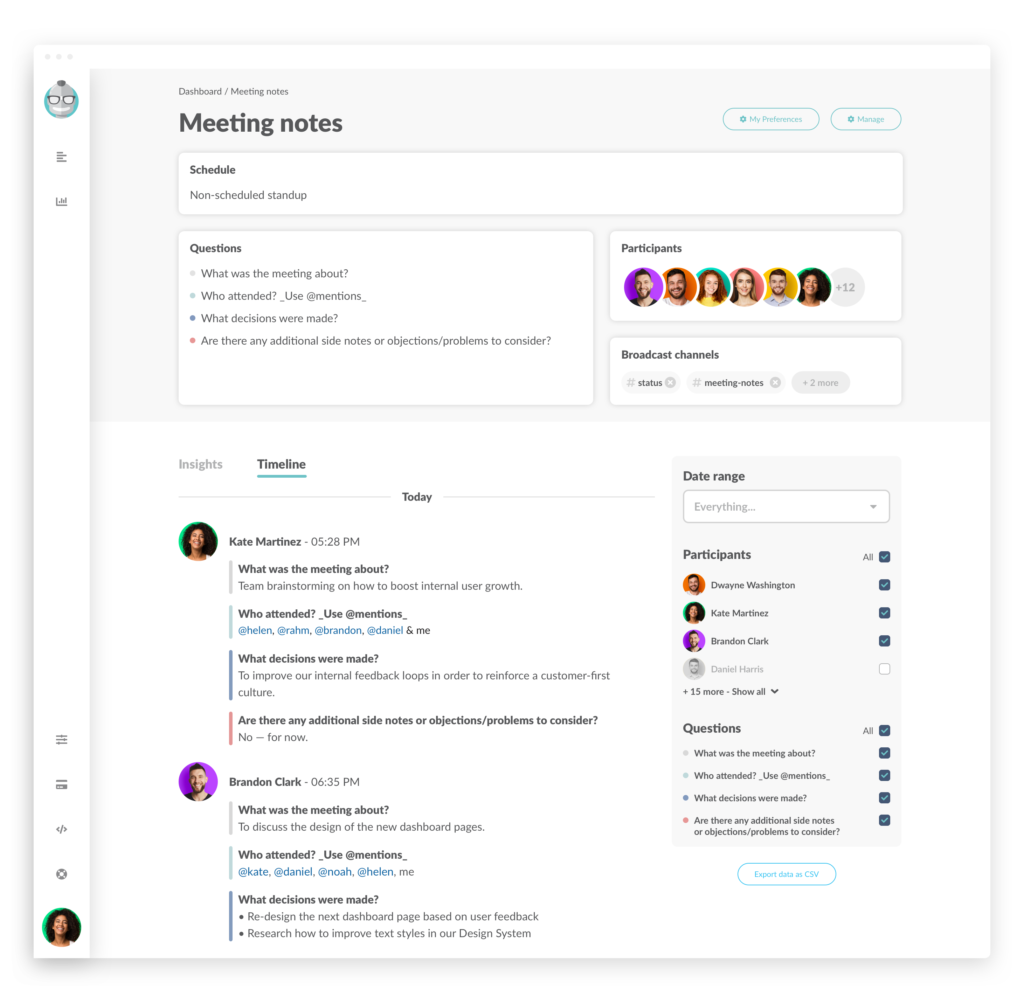Here’s a bitter truth: most meetings don’t work! Even managers themselves acknowledge that: executives consider up to 67% of meetings to be a failure. And there are many reasons, such as : weak preparation, lack of engagement, and lack of actionability.
Although there are many ways to address these issues, meeting notes has been around for ages. When done right, meeting notes (also called meeting minutes) extend every meeting’s value and let team members form actionable insights every time they discuss something.
In this article, we’ll share advice on how to take meeting notes consistently, effortlessly, and most productively within your whole team. In other words, we’ll help you unleash the real power of meeting notes.
But first, let’s cover the main benefits of practical meeting notes.
Here are just some of the benefits of taking meeting notes:
- Store useful knowledge. Every meeting can produce valuable insights, but no one can use them until they are properly stored. In addition people can also revise previous meeting notes in order to be more structural for future meetings.
- Keep track of commitments. Running meetings and setting goals is great, but who is going to execute tasks? Meeting notes let teams be accountable and keep track of obligations and responsibilities.
- Share data with non-present colleagues. It’s never a good idea to gather everyone for every meeting. Still, with meeting notes, more colleagues can benefit from meeting excerpts or critical points, including those absent or people from other departments.
- Save time on repetitive discussions. Discussing the same thing twice or even thrice is a productivity killer for any team. Meeting notes help teams eradicate repetitive meetings and instead extend one meeting’s value for several cycles.
Yet even with so many benefits, teams still struggle to take meeting notes consistently and in an organized manner. After several meetings, teams may stop taking notes completely.
Why does that happen, and what can we do about it?
Why It’s Tough To Take Meeting Notes Consistently
Here are the most common reasons why teams struggle to make meeting notes work or even completely abandon them.
- The process of note-taking is highly manual. Taking notes requires some effort. First finding paper or an app, and then organizing notes in a structure — such activity may seem tedious and even useless in certain cases. In addition to that, a manual process is error-prone: some things can be written down, whereas other insights are completely ignored or lost whether they are important or not.
- Notes all over the place. You probably know how quickly notes can turn into a chaotic pile of fragmented pieces. Without a proper organization, meeting notes become unusable. When several departments run several meetings a day, meeting notes are scattered across various apps and notepads.
- Notes are fragmented and don’t connect to other team data. The crucial value behind meeting notes is when they pop up at the exact moment they are needed in your workflow. For example, when discussing the latest sprint, why not analyze meeting notes from the same period? Unfortunately, scattered and unlinked meeting notes usually collect dust on someone’s desktop until it’s too late to put them to use.
With all that said, there’s a more efficient way to take meeting notes regularly and effectively.
Enter Geekbot’s Meeting Notes.
Geekbot Meeting Notes: Effortless and Consistent Note-Taking
With Geekbot Meeting Notes, you can summarize the key points of discussion, take note of decisions made, and let others know what’s happening in one simple Slack post.

It’s very simple to launch Geekbot Meeting Notes.
Step 1: Decide Which Questions You’d Like to Send
After every meeting, you can send a list of questions to participants and automatically gather their responses in one place.
Here are some example questions:
- What was this meeting?
- Which teams were invited to this meeting?
- Who attended? _please use @mentions here_
- What were the decisions made?
- Anything still bugging the people that attended?
- Are there any notable objections/problems to look out for?
Note : We have created a predefined list of questions for filling faster the template.

Step 2: Configure Geekbot’s Settings
Once questions are sent out to team members, it’s time to configure Geekbot to automatically send those questions on a daily basis, so you don’t have to do it manually.

Step 3: Go to the Dashboard to Filter all Notes
You can filter all notes by date, participant, or question, record all meeting notes in one place, and select different broadcast channels for other purposes.

Enjoy Geekbot meeting notes benefits:
- Enjoy effortless note-taking. It’s much easier to gather meeting notes by answering a series of short questions right after the meeting than coming up with a new structure every time.
- Track insight and notes over time. You can zero-in on notes from specific meetings with filters. That lets you quickly understand what was discussed during that day, who participated, and the key insights.
- Keep all insights in one place. With all the meeting notes in one place you can quickly prepare for future meetings, apply NLP-analysis tools to evaluate responses, or analyze your meetings’ efficiency.
Hint: add a question at the end of meeting notes “How satisfied were you with the meeting on a scale from 0 to 10?” and measure the efficiency of your meetings over time! - Connect meeting notes to other work data. As Geekbot Meeting Notes run directly in slack, you can connect your meeting notes with other data hubs such as calendar and Slack threads to make meeting notes an integral part of your workflow. You can also export meeting notes from Slack into other services you’re using.
Summary: Just The Right Amount of Meeting Notes
As with every tool, it’s easy to overdo things to the point when they lose their value. That’s why it’s not a good idea to note every meeting you have. Luckily, Geekbot Daily Stand-ups and Retrospectives automatically store all the crucial data for you and eradicate many useless meetings.
But Geekbot Meeting notes can be necessary for specific cases: collecting insights from an important meeting, tracking the efficiency of your weekly meetings, or sharing insights from one team to another.
Make sure to implement them in your workflow, and you quickly see the benefits we discussed earlier.
Let us know how you will be using this newest feature and how we can improve it in the comments!
Frequently asked questions
How do you take effective meeting notes?
Effective meeting notes are all about preparation, structured input, and actionable output. Decide what questions you’d like to send after a meeting in advance. While at the meeting, follow up with a summary of the topics on the agenda and the outcomes discussed. Organize responses by participants and type. For example, use insights - challenges - questions framework. Write meeting minutes while you still remember them!
What is the best way to organize meeting notes?
The best way to organize meeting notes is to use a pre-defined structure. For example, use the “actions and owners” structure to assign actionable items to the people who are most fit to resolve them. Using visual mediums such as mindmaps and the flip chart will also help you make meeting notes organized and easy to analyze. Tables with custom fields (item, summary, action owner) are also an excellent option for organizing meeting notes.
How do you take notes in a team meeting?
Prepare to take meeting minutes in advance. Open the tool you'll be using for storing notes, create a table with a list of participants already filled in, create basic categories (e.g. challenges, actions, ideas, action owners), and allocate 1-2 minutes period of note-taking during or right after the meeting. You can also use automatic video recording software or use survey bots to record meeting notes via asynchronous chat responses.



